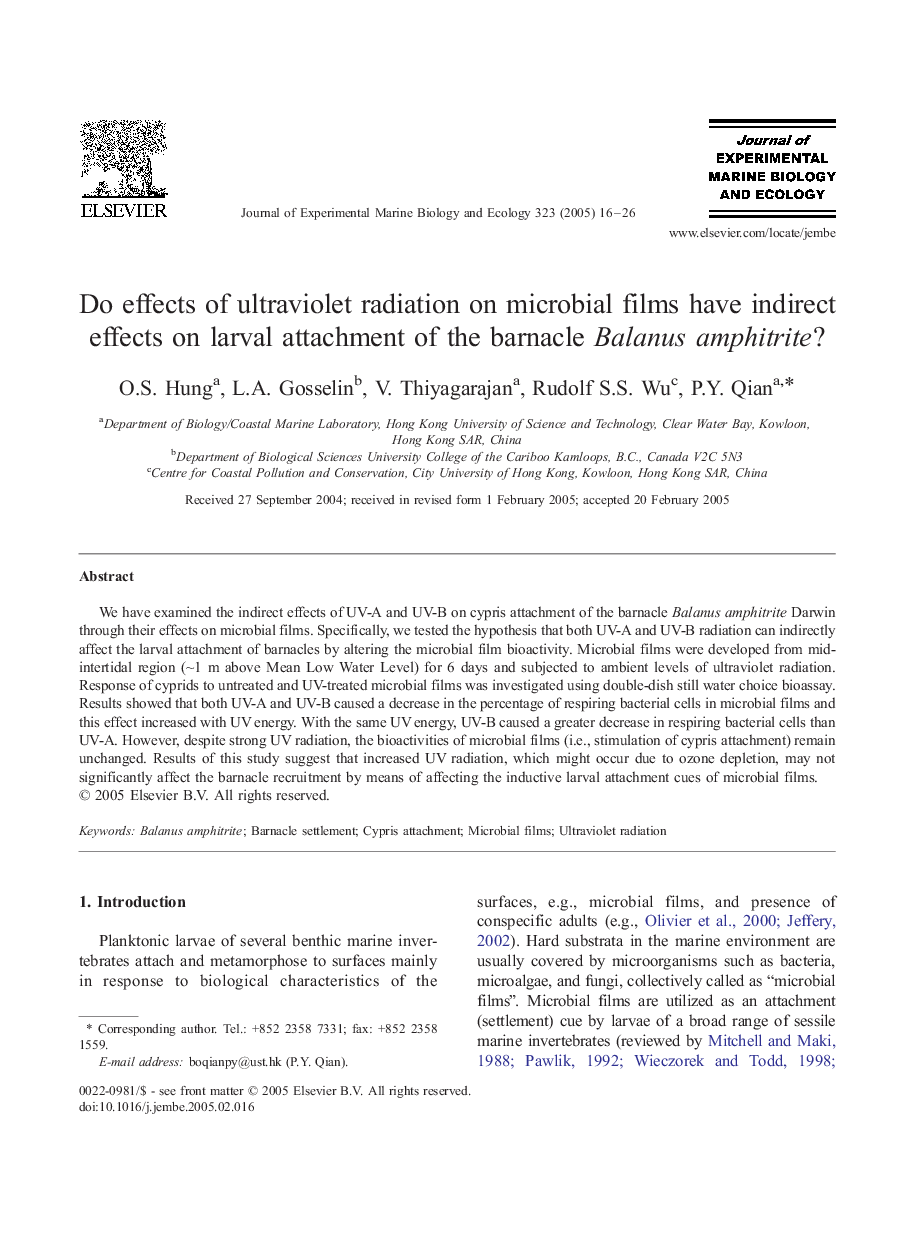| Article ID | Journal | Published Year | Pages | File Type |
|---|---|---|---|---|
| 9448733 | Journal of Experimental Marine Biology and Ecology | 2005 | 11 Pages |
Abstract
We have examined the indirect effects of UV-A and UV-B on cypris attachment of the barnacle Balanus amphitrite Darwin through their effects on microbial films. Specifically, we tested the hypothesis that both UV-A and UV-B radiation can indirectly affect the larval attachment of barnacles by altering the microbial film bioactivity. Microbial films were developed from mid-intertidal region (â¼1 m above Mean Low Water Level) for 6 days and subjected to ambient levels of ultraviolet radiation. Response of cyprids to untreated and UV-treated microbial films was investigated using double-dish still water choice bioassay. Results showed that both UV-A and UV-B caused a decrease in the percentage of respiring bacterial cells in microbial films and this effect increased with UV energy. With the same UV energy, UV-B caused a greater decrease in respiring bacterial cells than UV-A. However, despite strong UV radiation, the bioactivities of microbial films (i.e., stimulation of cypris attachment) remain unchanged. Results of this study suggest that increased UV radiation, which might occur due to ozone depletion, may not significantly affect the barnacle recruitment by means of affecting the inductive larval attachment cues of microbial films.
Related Topics
Life Sciences
Agricultural and Biological Sciences
Aquatic Science
Authors
O.S. Hung, L.A. Gosselin, V. Thiyagarajan, Rudolf S.S. Wu, P.Y. Qian,
